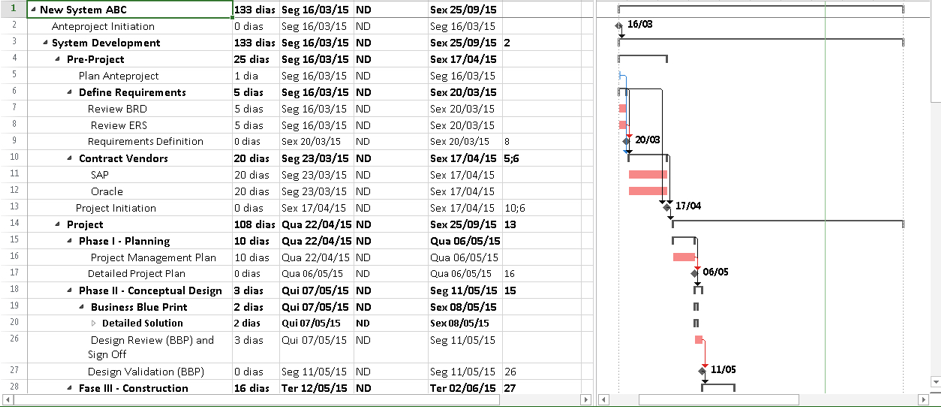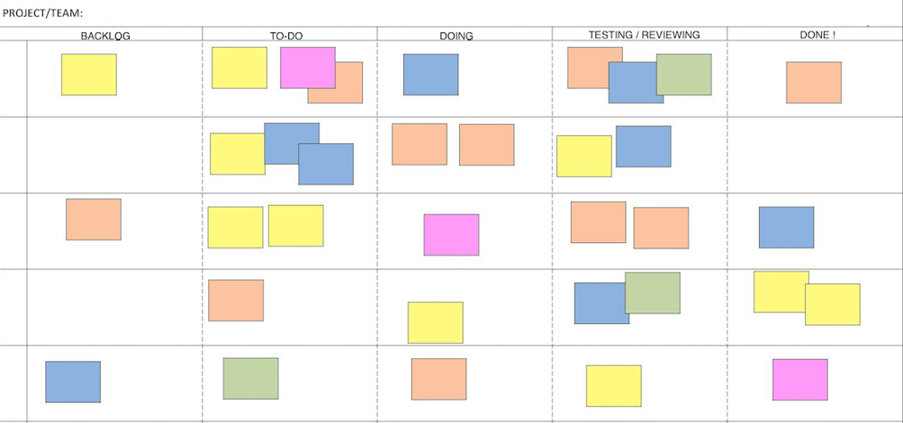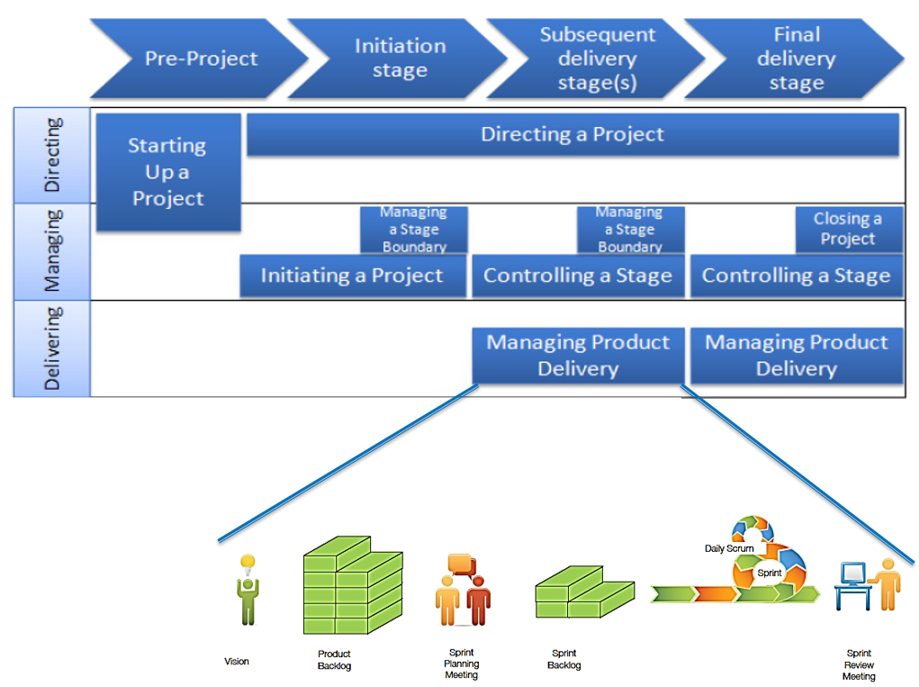
The term hybrid methodology isn’t as opaque as some new ideas that have sprouted up recently in the field of product development. The simple definition is that it’s a combination of two different methodologies or systems to create a new and better model.

What Is Hybrid Methodology?
Hybrid Methodology
Product development is rife with methodologies, from Waterfall to Agile to Lean, and the list goes on. They speak to the managerial interests of the profession, which is always looking for better and more efficient ways to carry a project to completion. New methodologies are constantly being developed to challenge the traditional models, and hybrid methodologies note that there can be synergy in combining aspects of new and traditional work methods.
Hybrid methodologies accept the fluidity of projects and allow for a more nimble and nuanced approach to the work. They can be applied to the full job or specific aspects of the project. But the bottom line is that the more ways you have to approach a problem the better chance you have of it being resolved.
Waterfall Model
There are many ways to think of how to employ a methodology and many points along a project at which to choose different methods to get different kind of work done. There are also different kinds of project methods in use depending upon your country of origin. In the U.K., the majority of project professionals adhere to a PRINCE2 methodology, an acronym for PRojects IN Controlled Environments, which addresses the larger questions of cost, time, resources, etc. Whereas in the U.S., a number of certified project managers follow the Project Management Institute’s PMBOK Guide for formal project management practice. It’s a book that collects the processes used in classic project management, with fundamental practices needed to achieve organizational results.
On a more tactical level, in both of those methodologies, the projects tend to adhere to the Waterfall method of planning project schedules according to a fixed, cascading plan; although their processes can be applied to any product development method or model. It is a classic model, one in which the executives and stakeholders on the project will want to see fixed costs and schedules, typically used for large infrastructure projects such as bridges, tunnels, construction and manufacturing.
Even with traditional, “macro” project management practices there is value in a hybrid approach (see below), what is termed a “micro-management” view that can boost results. It’s been suggested merging methodologies such as Scrum or Kanban, which break down a schedule of activities from the management view into smaller tasks that can be visualized to augment different views for team members.
It’s very important to be ‘fluent’ in more than one product development ‘language’ the more you learn, the better equipped you are to tame wild projects that cross our desks every day. Hybrid methodologies are tools that you can use to address aspects of your projects. The more you know, the bigger the toolkit and the more options you have to tackle the job.
Agile Hybrid Methodology
Agile is the poster child for hybrid mythology in that it was developed for a highly flexible environment with an openness to change and non-hierarchical forms of leadership. Agile is a big tent that holds a lot of methodologies, such as Scrum, Kanban and Lean. In fact, Agile is so strongly supported that there was an Agile Manifesto released on February 2001, composed by 17 software developers.
The Agile Manifesto is built on four basic values:
- Communications with parties is more important than standard procedures and tools.
- Focus on delivering a working application and less focus on providing thorough documentation.
- Collaborate more with clients.
- Be open to change instead of freezing the scope of the work.
There’s even a nonprofit called Agile Alliance that serves to promotes software development using Agile principles, yet some have charged that the Agile approach is the opposite of a methodology. The Agile movement is not anti-methodology, in fact many want to restore credibility to the word methodology. They want to restore a balance. They embrace modeling, but not in order to file some diagram in a dusty corporate repository. They embrace documentation, but not hundreds of pages of never-maintained and rarely-used tomes. They plan, but recognize the limits of planning in a turbulent environment. Those who would brand proponents of XP or Scrum or any of the other Agile Methodologies as ‘hackers’ are ignorant of both the methodologies and the original definition of the term hacker.
Today, Agile has become so popularized and hybridized that you often hear people referring to Agile with a capital “A” and agile with a lower case “a,” the latter being a looser term some companies or teams use to refer to their more collaborative, less structured approach to their projects. Agile is used across disciplines, in fact, from IT to marketing, capital A to lower case a, and is frequently used in conjunction with other more structured approaches according to different phases of a project.
Indeed some would argue that it’s the fast-paced changing nature of technology itself that is making strict adherence to any methodology hard for companies and organizations to follow, and indeed flexibility and hybrid ways of working are more likely the way of the future.
Hybrid is the Future… and It’s Already Here
Whether you like hybrid methodologies or not, they’re here to stay. Project management isn’t a static industry, and those who aren’t willing to stay abreast of new developments in the profession take the risk of being left behind. Even if you’re unconvinced that hybrid methodologies give you the flexibility to pivot in a project and use the best methods for a specific aspect of the job, you don’t want to alienate yourself from the project management community as they en masse start applying these hybrid methodologies.
According to the ESI International 2015 Top 10 Project Management Trends research, “New, innovative business models and technologies will force project managers to adapt. With many industries undergoing rapid changes, project management methods that allow for accelerated development and rapid learning will become critical to serving the business.” The report went on to cite examples in such traditional sectors as finance and healthcare, which employed new methodologies to keep up with changing customer expectations.
As industry looks to adapt, “existing project management methods will become strained,” the report says. “Increased uncertainty and velocity will directly impact front-end processes and risk management practices, requiring many project organizations to make adjustments. Agile will continue to grow in importance and even more project communities will struggle with hybrid project teams.”
With hybrid methodologies the forefront of project management’s push into the future, it’s an exciting time to be leading a project.
Hybrid Methodologies that Boost Project Results
After about 25 years of project management practice, I still stumble at people questioning the need for standardization. In reality, it is reasonable to ask why you need structure in a volatile world where change is the only certainty. On the other hand, we all know that an outstanding project management professional is the one who masters as many tools and techniques. Understanding the environment, you will be able to choose the right approach combining methodologies.
That is why I always highlighted the importance of being “fluent” in different project management “languages or dialects.” There are plenty of methodologies and standards. All of them have their place. Nevertheless, how do you build hybrid methodologies that suit your projects’ needs?
In this article, we are going to focus on hybrid methodologies to time management. I do not know about you, but I usually have three schedules in a project:
- Executive view:
- This is a macro version of the schedule, including only milestones, major deliverables and decision-points. The idea behind this approach is based on
PRINCE2’s principles. After all, you do not want to bother your sponsor, project board and client
with all the project details.
- This is a macro version of the schedule, including only milestones, major deliverables and decision-points. The idea behind this approach is based on
PRINCE2’s principles. After all, you do not want to bother your sponsor, project board and client
with all the project details.
- Management view:
- This is a more detailed schedule with work packages and activities, including reserves and contingencies. Being the project manager, I use it as my baseline to monitor
and control the project execution. The management view of the schedule is aligned with the
PMBOK Guide
processes.
- This is a more detailed schedule with work packages and activities, including reserves and contingencies. Being the project manager, I use it as my baseline to monitor
and control the project execution. The management view of the schedule is aligned with the
PMBOK Guide
processes.
- Team view:
- This is what is call the “micro-management” view of the schedule. You can adopt Scrum or Kanban to break schedule activities from the management view into smaller tasks to be managed and tracked in a visual board. The team view is where real work happens. You increase commitment with stand-up meetings and improve productivity by discussing issues and removing road-blocks.
Managing a project schedule is already a huge challenge. Managing three schedules, that is insane, right!? Well, before you shut down your brain and quit reading this post, let me explain the rationale behind this 3-schedules approach.
First of all, they must be developed, managed and updated in a cohesive and coherent way. There shall not be conflicting information among them. In fact, they are not three different schedules but one presented into three different levels of detail.
Executive View
The Executive View highlights the most important milestones to support decision-making at senior management level. The Project Board or Sponsor is responsible for providing guidance and orientation to the project in managing by stages and in managing by exception.

Management View
The Management View clearly defines the project life cycle according to project management best practices. The project manager is responsible for project planning and oversight in order to achieve project’s objectives stated by the Board or Sponsor. The project manager is responsible for managing risks and contingencies as long as he or she meets project’s tolerances.

Team View
The Team View allows flexibility, adding a new degree of freedom and tolerance that enhances project’s results. In this view, the project life cycle, phases, macro-deliverables and major tasks are broken into smaller activities to orient daily execution.

Hybrid View
In order for this setup to work, hierarchy, processes and structure are needed. In other words, Project Governance. The sponsor shall perform his role in orienting and supporting the project manager who, in his turn, is responsible for managing resources and people to deliver results according to the best practices. Depending on the size of the project, team leaders, responsible for technical and implementation aspects on specific work packages, shall manage their own agile development, resulting in a very effective hybrid methodology.

Fine-tuning depends on organizational processes, culture and structure. In my experience, it is possible to combine PRINCE2, PMBOK with Scrum or Kanban easily. Once you start working with hybrid methodologies, you are going to boost your project results by picking the right tool and process to best suit your project’s context and characteristics.
It is very important to be “fluent” in more than one product development “language” (methodologies, tools and techniques). The more you learn, the better equipped you are to tame wild projects that cross our desks every day. Go find better ways to manage projects!
These articles were originally published by ProjectManager.com
Copyright 2015 © ProjectManager.com
3420 Executive Center Drive, Austin, USA 78731

